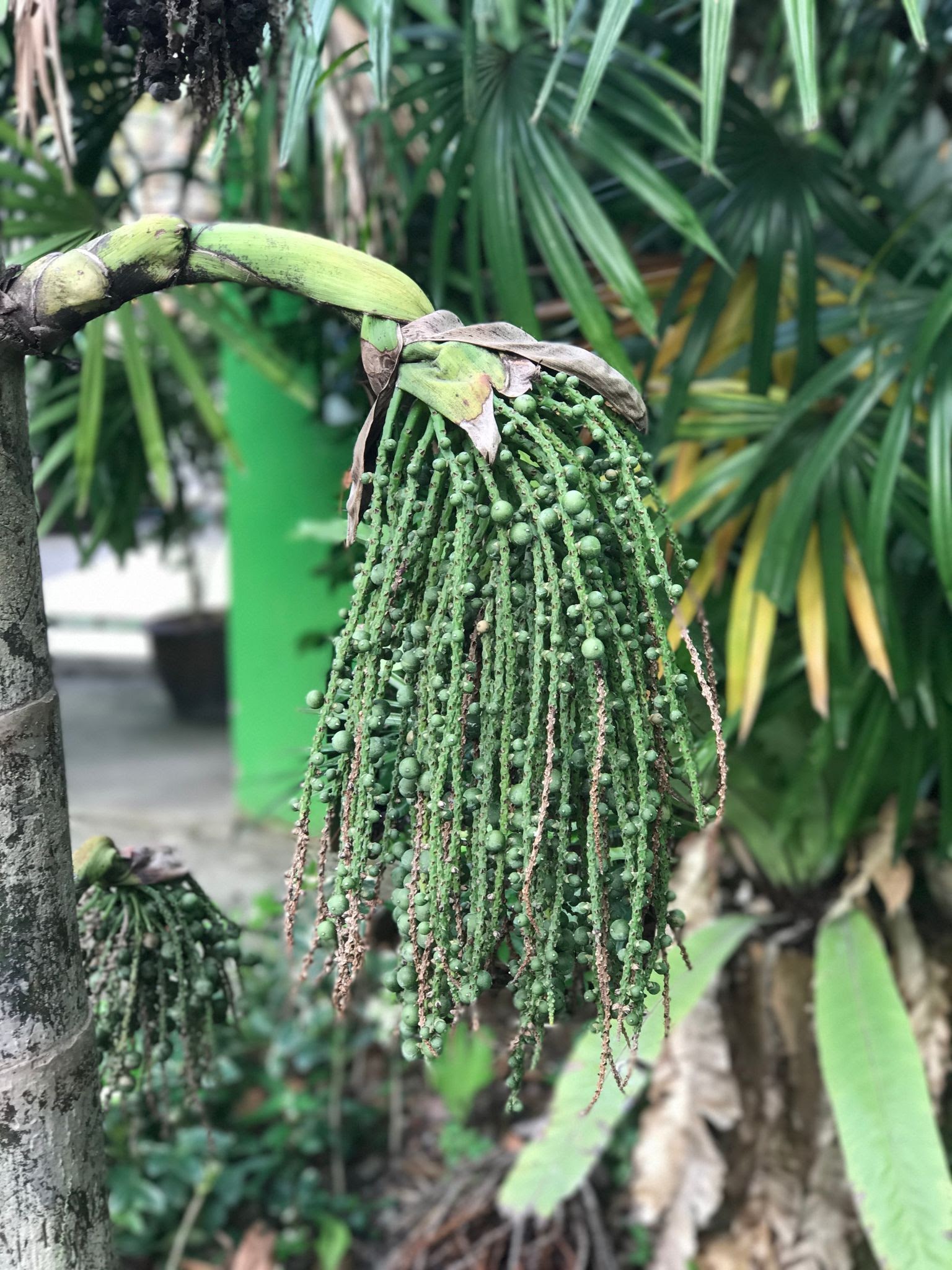
Caryota urens
-Fishtail tree
- Caryota urens is a species of flowering plant in the palm family, native to Sri Lanka, India, Myanmar and Malaysia (perhaps elsewhere in Indo-Malayan region), where they grow in fields and rainforest clearings, it is regarded as introduced in Cambodia.
- The epithet urens is Latin for "stinging" alluding to the chemicals in the fruit.
- Common names in English include solitary fishtail palm, kitul palm, toddy palm, wine palm, sago palm and jaggery palm.
- Its leaf is used as fishing rod after trimming the branches of the leaf and drying. According to Monier-Williams, it is called moha-karin ("delusion maker") in Sanskrit.
- It is one of the sugar palms.
USES:-
- The trunk contains a high quantity of starch and a juice can be extracted from the shoots of the flowers.The latter can be boiled into a sugary syrup. The cabbage can be eaten raw or cooked.
- This species is called kithul (කිතුල්) in Sri Lanka. It is best known as the source of kithul treacle, a liquid jaggery.
- The sap of the tree is boiled for many hours until it turns into the thick, dark treacle, unique to Sri Lanka.
- Kithul treacle is used as a sweetener in both Sri Lankan and Western cooking.
- Toddy is extracted from the inflorescence, and is considered somewhat powerful compared to toddy extracted from other palm trees.
- The pulp of the mature plant is cut, sun dried, and powdered, and is edible. It is sweet in taste.This powder is considered cool and nutritious in Coastal districts of Karnataka. In Sri Lanka, the powder is mixed with coconut milk and cooked to make Kithul Thalapa (කිතුල් තලප).
- Elephants are fed both the leaf and the pulp of this plant.
- The leaves possess strong fibres and are used for basketry in Cambodia, where the plant is named tunsaè.
- The heart of the trunk contains a starch similar to sago, as well the trunk can be used for building.
- The fruit, when its stiff hairs are removed, is pleasant and sweet to eat, and, as elsewhere, the Cambodians cut the stalks to make sugar, which in turn can be made into wine.
- Caryota urens is cultivated as an ornamental tree, and planted in gardens and parks in tropical and sub-tropical climates. It is also used as an interior and houseplant when smaller.
Plantation:-
- Light
Light is a limiting factor when growing fishtail palms because most indoor lighting can't equal the bright light these trees need to thrive. In the outdoors, they grow amidst taller trees that help filter out the light and heat, so plant them in a sunny spot that gets morning sun and less direct light later in the day.
- Soil and Water
Use a cactus soil mix or a general-purpose potting mix with sand or perlite mixed in to create excellent drainage, because these trees like it on the drier side. Add water to fishtail palms whenever the soil feels dry to the touch, which you can test by sticking a finger in the soil about an inch deep. Damp soil means you don't need to water.
- Temperature and Humidity
Fishtail palms are fussy about humidity and need at least 50% humidity to grow and stay healthy. Indoors, you can add a humidifier near the tree or place a tray of pebbles in water under its pot. Keep plants away from air vents or drafty areas. If your home is kept between 65ºF and 85ºF, your tree will do fine.
- Fertilizer
During the fishtail's growing season, add fertilizer once a month after watering. At a minimum, give your tree a slow-release fertilizer every few months. Use fertilizer specifically for palm trees for best results.
- Pruning
There's no need to prune fishtail palms. If you spot dead leaves, trim them off the tree. You can also prune if the tree is getting too large for your space. Trim the tops of leaves at the top of the tree to prevent it from growing taller.
